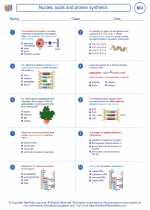Overview of Neanderthals
Neanderthals were a group of ancient humans who lived in Eurasia, primarily in the regions of present-day Europe and western Asia. They lived during the Pleistocene epoch, which lasted from about 2.6 million to 11,700 years ago.
Physical Characteristics
Neanderthals had a robust build, with a stocky and muscular frame suited for the cold climates in which they lived. They had a larger brain size than modern humans and distinctive facial features, including a prominent brow ridge and a larger nose.
Tools and Technology
Neanderthals were skilled toolmakers and used a variety of tools, including stone flakes, hand axes, and spears. They also used fire for cooking and warmth, as evidenced by the presence of hearths at some Neanderthal sites.
Life and Culture
Neanderthals were likely skilled hunters and used their tools to hunt large game such as mammoths and other animals. They also created art, evidence of which has been found in the form of cave paintings and decorative objects.
Interaction with Modern Humans
There is evidence to suggest that Neanderthals and modern humans coexisted in some regions, and there is also genetic evidence of interbreeding between the two groups. This interbreeding is why some modern humans carry a small percentage of Neanderthal DNA.
Extinction
It is still a topic of debate among scientists, but it is generally believed that a combination of factors, including climate change and competition with modern humans, contributed to the extinction of the Neanderthals around 40,000 years ago.
.◂Biology Worksheets and Study Guides High School. Nucleic acids and protein synthesis

 Worksheet/Answer key
Worksheet/Answer key
 Worksheet/Answer key
Worksheet/Answer key
 Worksheet/Answer key
Worksheet/Answer key
 Vocabulary/Answer key
Vocabulary/Answer key
 Vocabulary/Answer key
Vocabulary/Answer key
 Vocabulary/Answer key
Vocabulary/Answer key
